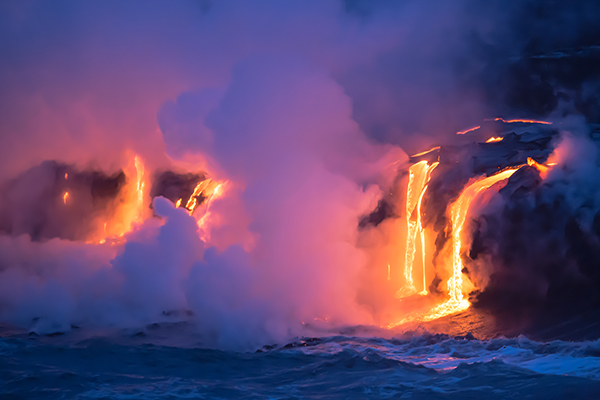
- NASA’s Perseverance rover discovered a dark, pitted rock formation called "Skull Hill" in the Jezero Crater on Mars, sparking theories about the planet's geological history and past habitability.
- The Jezero Crater, believed to have once been a lake, is a key site for exploring Mars' potential to have supported life.
- Skull Hill's unique features, including its dark color and pitted texture, suggest it may have been transported from elsewhere, possibly by ancient rivers or impact events.
- Initial analysis by Perseverance's SuperCam instrument indicates that Skull Hill is likely of volcanic origin, not a meteorite, adding to the evidence of past volcanic activity on Mars.
- The discovery of Skull Hill and other floats in the Jezero Crater is crucial for understanding Mars' geological and climatic history, and could provide insights into the planet's potential to have harbored life.
The discovery of Skull Hill
Skull Hill was discovered at a geological boundary where light and dark rock outcrops meet. This visually distinct rock, with its dark color, angular shape, and pitted texture, immediately stood out against the lighter, rock-riddled surface. According to a NASA blog post, the pits on Skull Hill may have formed in one of two ways: either small pieces within the rock eroded away, leaving behind holes, or Martian winds, carrying tiny dust and rock particles, could have worn away the rock's surface, creating the pits. The presence of Skull Hill and similar rocks, known as "floats," suggests that these rocks were transported from elsewhere. Scientists propose several theories to explain how these rocks ended up in their current location. One possibility is that they were carried by ancient rivers or streams when Mars had a warmer, wetter climate. Another theory is that they were ejected from impact craters, which could have excavated deeper volcanic layers. The dark color of Skull Hill initially led some to speculate that it might be a meteorite, but recent analysis by Perseverance's SuperCam instrument has ruled out this hypothesis. Floats are loose rocks that have been transported from their original locations, often over vast distances. On both Earth and Mars, these rocks can provide valuable insights into the planet's geological history. The presence of floats in the Port Anson region suggests that the area has undergone significant erosion and transport processes. Understanding the origin and composition of these rocks could help scientists piece together the puzzle of Mars' past climate and geological activity.Analyzing Skull Hill
Perseverance is equipped with a suite of instruments designed to analyze the chemical composition of rocks on Mars. The rover's SuperCam instrument, which uses a laser to vaporize small portions of rock and analyze the resulting plume, has been crucial in studying Skull Hill. Initial data suggest that the rock's composition does not match that of a typical meteorite, but it could be of volcanic origin. Volcanic rocks on Mars, like those on Earth, often contain dark minerals such as olivine, pyroxene, and biotite, which could explain Skull Hill's dark color. The discovery of Skull Hill and other floats in the Jezero Crater has significant implications for our understanding of Mars' geological history. If these rocks are indeed volcanic, they could provide evidence of past volcanic activity, which is crucial for understanding the planet's thermal evolution. Moreover, the presence of water in the past, as suggested by the Jezero Crater's history, raises the possibility that Mars was once a more hospitable environment for life. One of the primary goals of the Perseverance mission is to search for signs of ancient life on Mars. The rover has already collected samples of five rocks, analyzed seven others in detail, and zapped 83 more with its laser for remote study. These samples, if returned to Earth, could provide definitive evidence of past life on Mars. However, the Mars Sample Return mission, which aims to bring these samples back to Earth, faces significant challenges, including budget constraints and technical complexities. The discovery of Skull Hill is a testament to the ongoing exploration and scientific curiosity that drives our understanding of Mars. Each new finding, no matter how small, adds to the larger narrative of Mars' geological and climatic history. As Perseverance continues its journey, the mysteries of the Red Planet remain, inviting us to ask more questions and seek deeper answers. The enigmatic Skull Hill, with its dark, pitted surface and out-of-place location, is a reminder of the complex and dynamic history of Mars. As scientists work to unravel the secrets of this mysterious rock, they are also piecing together the broader story of a planet that may have once been more like Earth than we ever imagined. The continued exploration of Mars promises to reveal even more about our neighboring world and its potential to have harbored life in the distant past. Sources for this article include: LiveScience.com NYPost.com DailyMail.co.ukAncient hydrogen and magma ocean offer clues about Earth’s origins
By Willow Tohi // Share
By Lance D Johnson // Share
By Finn Heartley // Share
Amazon’s Kuiper satellite launch delay highlights uphill battle against Musk’s Starlink
By Cassie B. // Share
India imposes 12% TARIFF on steel products, sparking trade tensions with China and other countries
By ramontomeydw // Share
Study: Daily soda habit linked to 5x higher risk of ORAL CANCER in women
By avagrace // Share
Trump administration secures 18 trade proposals, boosting market confidence
By isabelle // Share
Nationwide enoki mushroom recall highlights broader food safety concerns
By isabelle // Share
Global crop failures and trade wars threaten mass famine by 2025, warns researcher David DuByne
By finnheartley // Share











